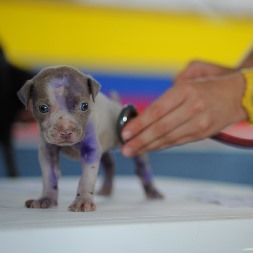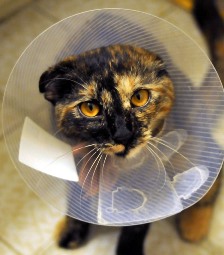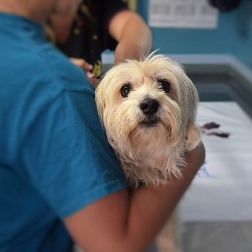How to Choose a Vet Tech School near Plymouth Washington
 Achieving your lifelong dream of working with and helping animals by enrolling in a veterinary technician program near Plymouth WA may at first seem like a challenging endeavor. After all, you have to find and enroll in a college that will deliver the necessary training to ensure that you can succeed as a vet tech. But just how do you approach analyzing and contrasting programs so that you can make the proper choice? Many future students launch their due diligence process by searching for colleges that are close to their residences. Once they have located some nearby schools, they find out which ones have the lowest tuition and hone in on those. Although cost and location are important concerns when evaluating veterinary technician programs, they are not the only significant ones when making your assessments. Qualifications such as internship programs and accreditation should be evaluated also. The point is that there are questions you need to be asking the vet technician schools you are reviewing before you make a final choice. We have presented several in this article to help get you started, but before we discuss them we’ll explore the varied responsibilities of vet techs and the training options available.
Achieving your lifelong dream of working with and helping animals by enrolling in a veterinary technician program near Plymouth WA may at first seem like a challenging endeavor. After all, you have to find and enroll in a college that will deliver the necessary training to ensure that you can succeed as a vet tech. But just how do you approach analyzing and contrasting programs so that you can make the proper choice? Many future students launch their due diligence process by searching for colleges that are close to their residences. Once they have located some nearby schools, they find out which ones have the lowest tuition and hone in on those. Although cost and location are important concerns when evaluating veterinary technician programs, they are not the only significant ones when making your assessments. Qualifications such as internship programs and accreditation should be evaluated also. The point is that there are questions you need to be asking the vet technician schools you are reviewing before you make a final choice. We have presented several in this article to help get you started, but before we discuss them we’ll explore the varied responsibilities of vet techs and the training options available.
The Function of a Veterinary Technician in Plymouth WA
 Among the first decisions that you will need to make is if you want to train as a veterinary assistant, technician or technologist. Part of your decision might be dependent on the amount of time and money that you have to commit to your training, but the primary determiner will most likely be which specialization interests you the most. What technicians and assistants share in common is that they all work under the immediate guidance of a licensed and practicing veterinarian. And although there are a number of duties that they can carry out within the Plymouth WA veterinary practice or hospital, they can’t prescribe medications, diagnose health issues, or conduct surgical procedures. In those areas they can only furnish assistance to a licensed vet. There are technologists and technicians that work outside of the standard vet practice, such as for zoos, animal shelters or law enforcement. Let’s take a look at the responsibilities and training prerequisites for each specialization.
Among the first decisions that you will need to make is if you want to train as a veterinary assistant, technician or technologist. Part of your decision might be dependent on the amount of time and money that you have to commit to your training, but the primary determiner will most likely be which specialization interests you the most. What technicians and assistants share in common is that they all work under the immediate guidance of a licensed and practicing veterinarian. And although there are a number of duties that they can carry out within the Plymouth WA veterinary practice or hospital, they can’t prescribe medications, diagnose health issues, or conduct surgical procedures. In those areas they can only furnish assistance to a licensed vet. There are technologists and technicians that work outside of the standard vet practice, such as for zoos, animal shelters or law enforcement. Let’s take a look at the responsibilities and training prerequisites for each specialization.
- Vet Assistants in almost all instances will have undergone a structured training program, either as an intern or apprentice in a vet clinic or hospital, or by finishing a certificate program at a vocational school or community college. As the name implies, their job function is to assist the veterinarians and vet technicians in the performance of their duties. Normally they are not involved with more complicated tasks, for instance assisting with surgical procedures. A few of their usual duties may include working at the front desk, cleaning and preparing exam rooms and equipment, or controlling animals during exams.
- Vet Technicians get more advanced training compared to assistants and usually obtain a 2 year Associate Degree, ideally from an American Veterinary Medical Association (AVMA) accredited program. They are in a sense the veterinary counterparts of medical nurses, since their basic job function is to assist vets with diagnosing and treating animal patients. Where they vary from veterinary assistants is that they are engaged in more complicated duties, such as assisting with surgical procedures or providing medication. All states currently require vet techs pass a credentialing exam for either registration, certification or licensing.
- Vet Technologists are similar to vet technicians and essentially carry out the same job functions. They are mandated to earn a Bachelor’s Degree in veterinary technology, which generally requires four years. So the only real difference between a vet technician and a technologist is the technologist’s more advanced level of education. But with an advanced degree comes more career options, higher salaries and possible management positions. They are additionally mandated to pass a credentialing exam for either licensing, registration or certification.
Vet technicians and technologists may specialize in areas such as internal medicine, anesthesia or urgent care. A number may earn certification from the American Association for Laboratory Animal Science (AALAS) to work in Plymouth WA labs or research facilities as well.
Vet Tech Online Programs Offered in Plymouth
 An alternative that might make sense for those with a hectic schedule or who are working full time while attending vet school is to enroll in an online training program. Because the classes are offered over the internet, students can attend on their own schedule wherever a computer is accessible. The curriculum is taught using multiple methods, including videos, slide shows and live streaming webinars. And since most vet technician and technologist degrees require practical training, that segment can typically be carried out as an internship or work study program at a local Plymouth WA veterinarian practice or hospital. Distance learning, as it is also called, can in some instances lower the cost of your education. Tuition and secondary expenses, for example for commuting and study materials, may be more affordable compared to more standard classroom courses. Just be sure that the program that you select is accredited, either by the AVMA or another nationally recognized accrediting agency. With the online classes and the clinical training, everything is furnished for a complete education. So if you are disciplined enough to learn in this more self-reliant fashion, an online veterinary technician program may be the perfect choice for you.
An alternative that might make sense for those with a hectic schedule or who are working full time while attending vet school is to enroll in an online training program. Because the classes are offered over the internet, students can attend on their own schedule wherever a computer is accessible. The curriculum is taught using multiple methods, including videos, slide shows and live streaming webinars. And since most vet technician and technologist degrees require practical training, that segment can typically be carried out as an internship or work study program at a local Plymouth WA veterinarian practice or hospital. Distance learning, as it is also called, can in some instances lower the cost of your education. Tuition and secondary expenses, for example for commuting and study materials, may be more affordable compared to more standard classroom courses. Just be sure that the program that you select is accredited, either by the AVMA or another nationally recognized accrediting agency. With the online classes and the clinical training, everything is furnished for a complete education. So if you are disciplined enough to learn in this more self-reliant fashion, an online veterinary technician program may be the perfect choice for you.
What to Ask Plymouth WA Veterinary Technician Colleges
 At this point you should have determined which veterinary credential that you want to attain, and if you want to study online or attend a program on campus. Since there are a large number of veterinarian community colleges, vocational and trade schools in the Plymouth WA area as well as across the Country, you should ask some important questions in order to fine tune your list of alternatives. As we discussed in our opening, many prospective students start by concentrating on location and tuition expense. But we have already mentioned other significant qualifiers, such as accreditation and internship programs. And of course you need to enroll in a school that offers the degree and specialty that you want to earn. These and other factors are covered in the list of questions that you should ask the veterinary technician programs that you are reviewing.
At this point you should have determined which veterinary credential that you want to attain, and if you want to study online or attend a program on campus. Since there are a large number of veterinarian community colleges, vocational and trade schools in the Plymouth WA area as well as across the Country, you should ask some important questions in order to fine tune your list of alternatives. As we discussed in our opening, many prospective students start by concentrating on location and tuition expense. But we have already mentioned other significant qualifiers, such as accreditation and internship programs. And of course you need to enroll in a school that offers the degree and specialty that you want to earn. These and other factors are covered in the list of questions that you should ask the veterinary technician programs that you are reviewing.
Is the Vet College Accredited? It’s essential that you make sure that the veterinary technician college you select is accredited by a regional or national accrediting organization. As previously mentioned, one of the most highly regarded is the American Veterinary Medical Association (AVMA). Trade schools and colleges that are accredited by the AVMA have undergone an extensive review process that ensures you will obtain a quality education. Also, accreditation is essential if you are applying for a student loan or financial assistance, since a large number of programs are not obtainable for non-accredited schools. Last, having a degree or certificate from an accredited program is often a prerequisite for employment for a number of Plymouth WA area veterinary practices and hospitals.
What is the College’s Reputation? The vet trade school or college and program you select must have an outstanding reputation within the veterinary field. You can begin your due diligence by asking the schools you are looking at for references from the employers in their job placement network. Other pointers include looking on online school ranking websites and speaking with the school’s accrediting organizations as well. You can ask the Washington school licensing department if there have been any complaints or infractions regarding your targeted schools. As a final tip, contact some Plymouth WA veterinarians that you might wish to work for after you get your training. Find out what they think about your school selections. They might even suggest one or more colleges not on your list.
Are there Internship Programs? The most effective means to get practical hands on training as a vet tech is to work in a clinical environment. Find out if the schools you are considering have internship programs set up with Plymouth WA veterinarians, vet clinics or hospitals. Almost all veterinary medicine programs mandate practical training and a large number provide it by means of internships. Not only will the experience be beneficial as far as the practical training, but an internship may also help establish relationships in the local veterinary community and assist in the search for employment after graduation.
Is there a Job Placement Program? Searching for a job after graduating from a veterinary technician school may be challenging without the help of a job placement program. To start with, find out what the graduation rates are for the schools you are evaluating. A low rate could indicate that the teachers were ineffective at teaching the syllabus or that some students were unhappy with the program and quit. Next, check that the schools have a job placement program and find out what their placement rates are. A higher placement rate could mean that the school has an exceptional reputation within the Plymouth WA vet community and has a considerable network of contacts for student placements. A low rate may mean that the training is not highly regarded by employers or that the job placement program is ineffective at placing students.
How Large are the Classes? If the classes are bigger, you may receive little or no one-on-one instruction from the teachers. Request from the Plymouth WA programs you are considering what their class teacher to student ratios are. You might also want to participate in a couple of classes (if practical) to observe the interaction between students and teachers. Ask for evaluations from students concerning the quality of instruction. Also, talk with the instructors and determine what their backgrounds are as well as their methods of teaching.
Where is the School Located? Yes, we already talked about location, but there are several more points to consider on the topic. If you are going to drive to your vet tech classes from your Plymouth WA home, you must make sure that the commuting time fits into your schedule. For example, driving during the weekend to investigate the route won’t be the same as the commute during rush hour traffic, especially if the school is located near or in a large city. In addition, if you do decide to enroll in a college in another state or even outside of your County of residence, there may be higher tuition charges especially for state and community colleges. Of course taking online classes may be an alternative that will give you more flexibility and minimize the need for travel.
Do the Classes Fit Your Schedule? And finally, it’s essential that you determine if the veterinary programs you are evaluating offer class times that are sufficiently flexible to accommodate your schedule. For instance, a number of students continue working full time and can only attend classes on the weekends or in the evenings near Plymouth WA. Others might only be able to attend classes in the morning or later in the afternoon. Verify that the class times you require are available before enrolling. In addition, determine if you can make-up classes that you might miss because of work, sickness or family responsibilities. You may discover that an online program is the ideal solution to fit your veterinary education into your busy life.
Enrolling in a Vet Tech School near Plymouth WA?
If you have decided to attend a Veterinary Technician Program in the Plymouth Washington area, then you may find the following information about the location of your school campus interesting and informing.
Marton–New Plymouth line
.mw-parser-output .RMbox{box-shadow:0 2px 2px 0 rgba(0,0,0,.14),0 1px 5px 0 rgba(0,0,0,.12),0 3px 1px -2px rgba(0,0,0,.2)}.mw-parser-output .RMinline{float:none;width:100%;margin:0;border:none}.mw-parser-output table.routemap{padding:0;border:0;border-spacing:0;background:transparent;white-space:nowrap;line-height:1.2;margin:auto}.mw-parser-output .RMir{border:0;border-spacing:0;display:table;line-height:0;padding:0!important;margin:0 auto!important}.mw-parser-output table.routemap .RMsi{display:inline;font-size:90%}.mw-parser-output table.routemap .RMl1{padding:0 3px;text-align:left}.mw-parser-output table.routemap .RMr1{padding:0 3px;text-align:right}.mw-parser-output table.routemap .RMl{text-align:right}.mw-parser-output table.routemap .RMr{text-align:left}.mw-parser-output table.routemap .RMl4{padding:0 3px 0 0;text-align:left}.mw-parser-output table.routemap .RMr4{padding:0 0 0 3px;text-align:right}.mw-parser-output table.routemap>tbody>tr{line-height:1}.mw-parser-output table.routemap>tbody>tr>td{padding:0;width:auto;vertical-align:middle;text-align:center}.mw-parser-output .RMir>tbody>tr{display:inline-table}.mw-parser-output .RMir>tbody>tr>td{padding:0;height:20px;min-height:20px}.mw-parser-output .RMir .RMov{position:relative}.mw-parser-output .RMir .RMic{position:absolute;left:0px;top:0px;padding:0}.mw-parser-output .RMir .RMtx{line-height:20px;vertical-align:middle;text-align:center}.mw-parser-output .RMir .RMsp{height:20px;min-height:20px}.mw-parser-output .RMir div>.RMtx{position:absolute}.mw-parser-output .RMir .RMtx>abbr,.mw-parser-output .RMir .RMtx>div{line-height:.975;display:inline-block;vertical-align:middle}.mw-parser-output .RMir .RMf_{height:5px;min-height:5px;width:20px;min-width:20px}.mw-parser-output .RMir .RMfm{height:100%;min-height:100%;width:4px;min-width:4px;margin:0 auto}.mw-parser-output .RMir .RMo{width:2.5px;min-width:2.5px}.mw-parser-output .RMir .RMc{width:5px;min-width:5px}.mw-parser-output .RMir .RMoc{width:7.5px;min-width:7.5px}.mw-parser-output .RMir .RMd{width:10px;min-width:10px}.mw-parser-output .RMir .RMod{width:12.5px;min-width:12.5px}.mw-parser-output .RMir .RMcd{width:15px;min-width:15px}.mw-parser-output .RMir .RMocd{width:17.5px;min-width:17.5px}.mw-parser-output .RMir .RM_{width:20px;min-width:20px}.mw-parser-output .RMir .RM_o{width:22.5px;min-width:22.5px}.mw-parser-output .RMir .RM_c{width:25px;min-width:25px}.mw-parser-output .RMir .RM_oc{width:27.5px;min-width:27.5px}.mw-parser-output .RMir .RM_d{width:30px;min-width:30px}.mw-parser-output .RMir .RM_od{width:32.5px;min-width:32.5px}.mw-parser-output .RMir .RM_cd{width:35px;min-width:35px}.mw-parser-output .RMir .RM_ocd{width:37.5px;min-width:37.5px}.mw-parser-output .RMir .RMb{width:40px;min-width:40px}.mw-parser-output .RMir .RMcb{width:45px;min-width:45px}.mw-parser-output .RMir .RMdb{width:50px;min-width:50px}.mw-parser-output .RMir .RMcdb{width:55px;min-width:55px}.mw-parser-output .RMir .RM_b{width:60px;min-width:60px}.mw-parser-output .RMir .RM_cb{width:65px;min-width:65px}.mw-parser-output .RMir .RM_db{width:70px;min-width:70px}.mw-parser-output .RMir .RM_cdb{width:75px;min-width:75px}.mw-parser-output .RMir .RMs{width:80px;min-width:80px}.mw-parser-output .RMir .RMds{width:90px;min-width:90px}.mw-parser-output .RMir .RM_s{width:100px;min-width:100px}.mw-parser-output .RMir .RM_ds{width:110px;min-width:110px}.mw-parser-output .RMir .RMbs{width:120px;min-width:120px}.mw-parser-output .RMir .RMdbs{width:130px;min-width:130px}.mw-parser-output .RMir .RM_bs{width:140px;min-width:140px}.mw-parser-output .RMir .RM_dbs{width:150px;min-width:150px}.mw-parser-output .RMir .RMw{width:160px;min-width:160px}.mw-parser-output .RMir .RM_w{width:180px;min-width:180px}.mw-parser-output .RMir .RMbw{width:200px;min-width:200px}.mw-parser-output .RMir .RM_bw{width:220px;min-width:220px}.mw-parser-output .RMir .RMsw{width:240px;min-width:240px}.mw-parser-output .RMir .RM_sw{width:260px;min-width:260px}.mw-parser-output .RMir .RMbsw{width:280px;min-width:280px}.mw-parser-output .RMir .RM_bsw{width:300px;min-width:300px}
The Marton–New Plymouth line (MNPL) is a secondary main line railway in the North Island of New Zealand that links the Taranaki and Manawatu-Wanganui regions. It branches from the North Island Main Trunk Railway (NIMT) at Marton and runs near the South Taranaki Bight of the west coast before turning inland, meeting the Stratford–Okahukura Line (SOL) at Stratford and running to New Plymouth. Construction of the line was completed in 1885, and along with the SOL it provided an alternate route to the NIMT from the SOL's completion in 1933 until the latter was mothballed in 2010. In its early days it was plied by the North Island's first regional express, the New Plymouth Express, but it has been freight only since the cancellation of the last passenger services in 1977.
The southern portion of the line was conceived as part of the Foxton and Wanganui Railway, which was intended to link the two ports of Foxton and Wanganui with hinterland settlements such as Marton and New Plymouth, and form the first portion of a trunk route between Wellington and Taranaki.[1] A tramway had originally been considered for the Rangitikei District, but this plan was abandoned in 1872 and surveys for a railway undertaken in 1873. Contracts were awarded the next year for construction, but mass sickness caused work to slow in 1875[2] and the collapse of a girder during the construction of a bridge over the Whanganui River in 1876 compounded the delays.[3]
Pick the Best Vet Tech Program near Plymouth WA
 Enrolling in the appropriate vet tech program is a crucial first step to starting a rewarding career providing care and treatment for pets and livestock. Students thinking about veterinary technician programs must make their decision based on multiple key issues. Veterinary technicians and technologists work in animal hospitals, veterinary clinics and animal shelters. They typically take on administrative tasks and assist the veterinarian with the animals when needed. As we have discussed, it’s imperative that you decide on a veterinary medicine program that is both accredited and has an outstanding reputation within the field. This applies to online vet tech colleges as well. By asking the questions included in our checklist for reviewing schools, you will be able to narrow down your choices so that you can make your final choice. And by choosing the right school, you can achieve your goal of becoming a veterinary technician in Plymouth WA.
Enrolling in the appropriate vet tech program is a crucial first step to starting a rewarding career providing care and treatment for pets and livestock. Students thinking about veterinary technician programs must make their decision based on multiple key issues. Veterinary technicians and technologists work in animal hospitals, veterinary clinics and animal shelters. They typically take on administrative tasks and assist the veterinarian with the animals when needed. As we have discussed, it’s imperative that you decide on a veterinary medicine program that is both accredited and has an outstanding reputation within the field. This applies to online vet tech colleges as well. By asking the questions included in our checklist for reviewing schools, you will be able to narrow down your choices so that you can make your final choice. And by choosing the right school, you can achieve your goal of becoming a veterinary technician in Plymouth WA.
Other Doggone Good Cities in Washington
Business Results 1 - 10 of 26













